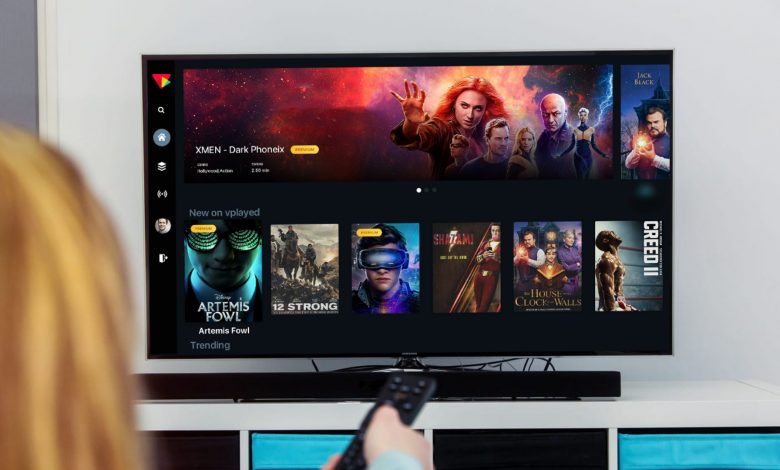Top 9 Major Challenges and Trends for the IPTV Services

Ten or twenty years back, television viewers were not so exacting. They were only interested in viewing their favorite programming from the comfort of their living room. These days, this is what they want, but they also require and ask much more, and they are receiving all of the things they need via IPTV services.
While that is very good for the customers, it is not so easy for the IPTV providers to cope with their client’s demands, but, with all the competition prevalent in the industry, they just have to. If they do not, there is a risk of loss of clients to other firms/companies.
Whether it’s a company looking to broaden its horizons into IPTV trends or an IPTV streaming provider company striving to stay afloat on the latest trends in the business, it is vital that you are aware of the major trends which exist in the IPTV zone.
In this way, you can ascertain if they are mandatory for your IPTV business plan or IPTV business solutions to reap rewards/success and how you need to act to present them, how to promote them, and what to alter for them. To get started, in this article, you will find a detailed explanation of some of the most in-demand trends in the IPTV streaming trends industry at the moment.
IPTV Industry – Major Trends & Challenges or IPTV Platform Challenges
1. How 5G is Upping the Game
In urban zones, when talking about the IPTV platform trends or IPTV business opportunities in 2021, 5G Internet is expected to become the new normal. This cellular network technology which is quite next-generation will offer faster and more definitive internet speeds. In a practical sense, 5G is nearly 100 times faster than the top-rated 4G LTE networks. Nearly 29% of customers would pay a premium amount if 5G offered an enhanced quality video on mobile units and lowered buffering.
2. Immersive Streaming Technology is Within Reach
Immersive Streaming Technology or Streaming 4K video required an internet bandwidth of about 30 Mbps. When it comes to live video streaming, you require double the bandwidth – at least. That is not a regular deal for customer-grade net connections. But, the expansion of 5G will assist in the growth of streaming video quality by turning 4K streaming solutions effective.
The additional video bandwidth will make it real for the streaming of 4K video. You can expect Virtual Reality or VR and 4K to be the conclusive features in the next one or two years. With the help of these new network connections, 360 live streaming will also become doable. On an all-inclusive level, the streaming experience will be very immersive, in the near future.
VR technology is very popular in consumer circles and is entering different industries. As technology becomes more accessible, these trends continue to grow and expand. A lot of IPTV platform providers are making the most of the opportunities.
3. Big Media Players Dominate the Premium Market
The Over-the-Top (OTT) premium market is going through some eventful shifts. After several years without big competition, Netflix is being affected.
Media giants like NBC, Disney, and HBO have broadcast Peacock Premium, Disney +, and HBO Go. Additionally, IPTV solution for businesses like the OTT streaming service from Apple TV + and advancing services from Comcast and AT&T.
With the rise of these OTT trends and services, they are making an entryway into the mainstream in a never-before-seen manner. OTT advertising is becoming more prominent in the online ads sphere also. Advertising income is witnessing a sharp rise as more and more individuals/consumers start to use these services. You can easily start an IPTV business at your own convenience.
4. Android TV is rapidly increasing its scalability
An increasing number of operators are leaning towards Android TV Operator Tier as an option to Linux-based set-top boxes. The ones already there and released large-scale distribution of TV services designed around an Android TV STB are setting the bar for operators which are medium-sized.
5. Apple TV – a second choice for disruptors
The high-powered Apple TV box has shown that it is an essential component of an innovative entertainment & TV presentation. Salt has demonstrated this in an impressive manner. A late riser in the TV market – the leading Swiss network operator released an experimental TV service along with Zattoo and Apple in 2018 with massive success.
6. OTT & 4K join hands and come together
4K VOD content through OTT has been in existence for a while, but 4K live streaming was a long way behind. Zattoo very recently released 4K non-live and live content in their all-Unicast/OTT setup. Among the foremost channels in 4K/UHD are having Insight TV, Now 4K, Stingray Ambiance, and Festival 4K. Additional channels will follow these. With 4K, Salt is supporting the complete capacity of a 4K device – in the form of an Apple TV.
7. Customization or Personalization is the new suggestion
The hopes of users for content discovery or customization offer network operators with a great challenge. The standard setup or bar for consumer expectations and discovery is held by global leaders in OTT services such as Netflix – users will not settle for anything less than that.
Discovery and Personalization open the way up for new and appealing options for buying more and monetization. For this aim, Zattoo has created a ‘General Discovery Engine’ with a joint user interface to explore content. The Discovery Engine permits a unique display of forthcoming content, catch-up, and VOD content, and live TV content.
8. Monitoring Of Disruption
A lot of operators are outsourcing their avant-garde TV service than creating it on their own – control is crucial. It is necessary for a SAAS model for providers to have complete transparency, control, and clarity over their own OTT/IPTV service which includes dashboards and live data on KPIs and QoS. With this in mind, Zattoo has created Bridge – a state-of-the-art command center offering live insight into usability and data.
9. Innovation in OTT monetization owing to subscription fatigue
As per an evaluation, more than one-third of broadcasters monetize their content by way of subscription models. But, this is having a serious impact on the market.
With findings from a global survey from Apester, 60% of people are fed-up of multiple streaming services. Over a fifth do not know a lot of forthcoming services, only 16.5% say it is practical to have so many existing services. The present reality is a sort of ‘subscription fatigue’ and is becoming a major problem. Viewing subscription-based video services is an everyday habit for 60% of adults in America. A lot of viewers have given up of subscribing to so many services.
This is resulting in increased innovation when it comes to OTT trends in video monetization. Want to know how to start an IPTV business? The IPTV business challenges are many. Providers are leaning towards advertising and pay-per-view monetization as options for subscription production or monetization




